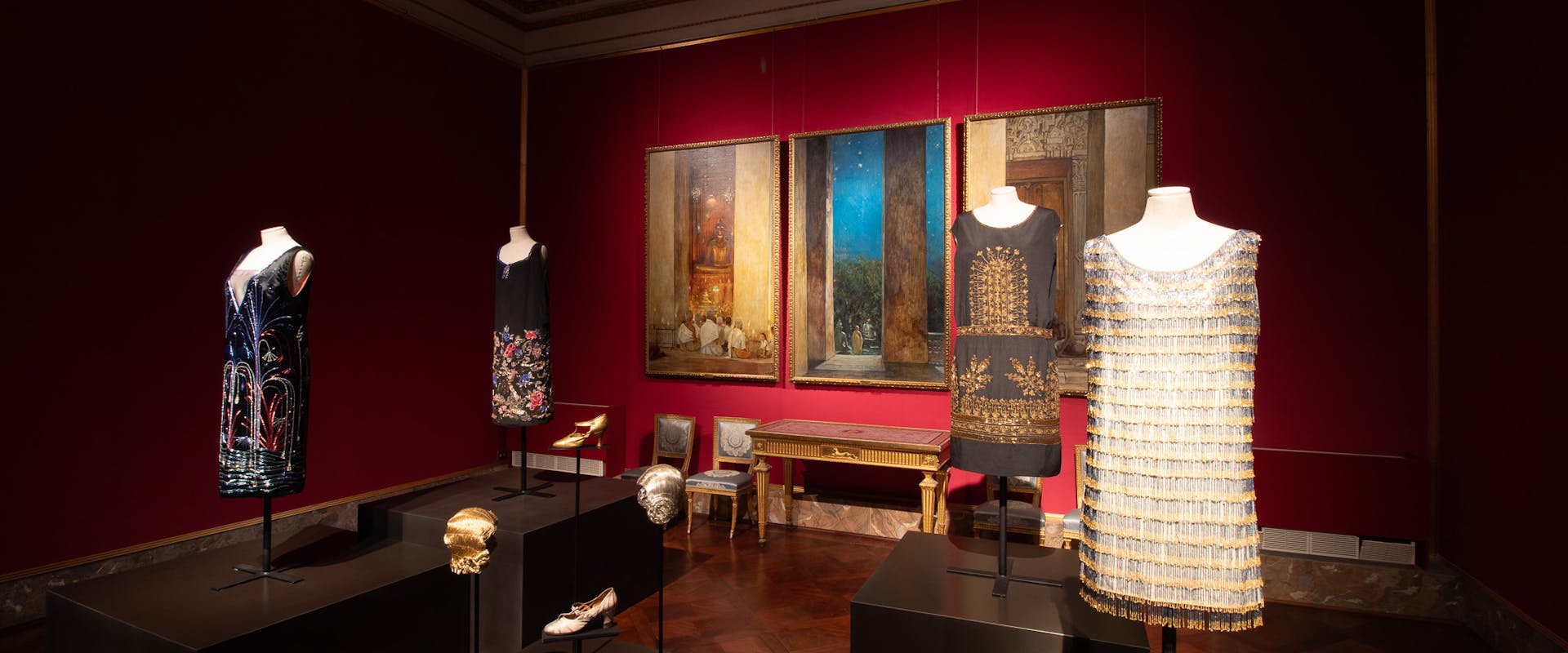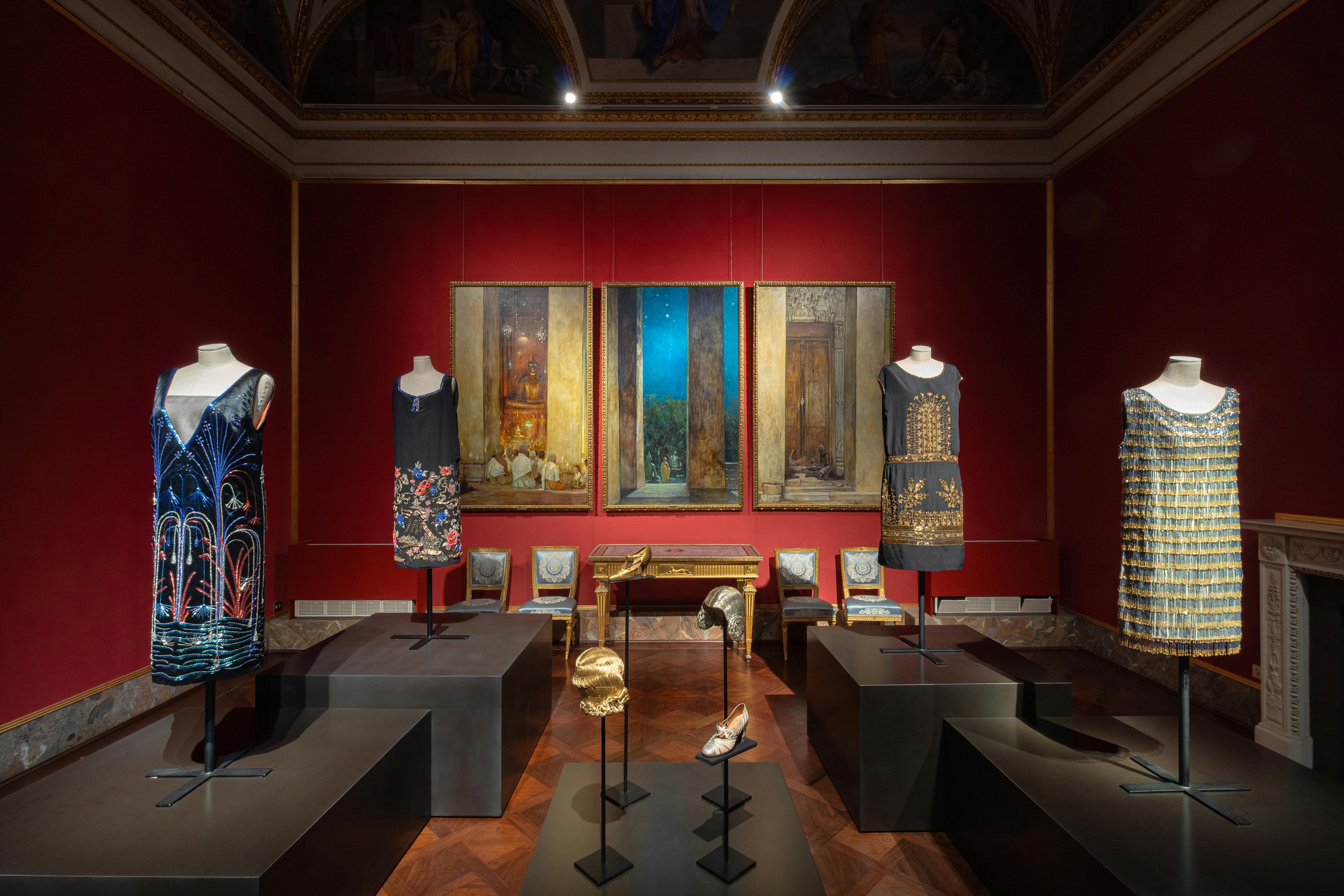At Palazzo Pitti the 20th century showcased in 40 dreamlike dresses: the new arrangement at the museum of Costume and Fashion
Nine newly opened rooms (with many never-before-seen garments) recount the styles of the past century, from the Charleston of the 1920s to the dazzling '80s of Enrico Coveri, passing through the breathtaking creations of Elsa Schiaparelli, Yves Saint Laurent, Pierre Cardin, and Roberto Capucci
A century of fashion, from the liveliness of the Charleston to the daz-zling '80s of Enrico Coveri, passing through the breathtaking creations of Elsa Schiaparelli, Yves Saint Laurent, Pierre Cardin and Roberto Capucci. The new arrangement by the Museum of Costume and Fash-ion at Palazzo Pitti narrates this story through 40 dresses, emblematic
of the world's finest tailoring (many of which have never been show-cased), engaging elegantly with works by 20th-century painting mas-ters such as Galileo Chini, Felice Casorati, and Alberto Burri.
Exactly one year after the Gallery's complete renovation and subse-quent total reopening, the twentieth-century selection is displayed in rotation to present the public with a new enchanting chapter in cos-tume history. Boasting a collection of 15,000 historical garments and accessories from the eighteenth century to the present day, the Muse-um of Costume and Fashion has decided to refresh its exhibits each year. This will enable extraordinary, previously unseen, and carefully restored attire to be brought out from storage in rotation for the public to enjoy. The rooms dedicated to seventeenth and eighteenth-century fashion and Medici clothes remain unchanged.
The first of the new spaces, dedicated to the ‘Charleston fashion’ be-tween avant-garde and exoticism, opens the new selection: Galileo Chini's remarkable Triptych turns the room into a dramatic scene remi-niscent of Puccini, with the dress worn by the painter's wife at the premiere of Turandot at Milan's Teatro La Scala on 25 April 1926. Additional exquisite dresses crafted from fine silks and adorned with decorative motifs inspired by China, Japan, and India illustrate how Orientalism was closely linked with the flappers' desire for emancipa-tion and experimentation—young women of the era who defied con-vention.
Following this are two rooms dedicated to fashion spanning the period between the wars, featuring a striking collection of clothing that re-flects Deco culture, avant-garde tendencies, rationalism, and the cine-matic glamour of the 1930s. In this setting, Felice Casorati's painting, Lo straniero (The Stranger), acts as a counterpoint to the works of Elsa Schiaparelli and Madeleine Vionnet.
The arrangement continues with a journey through post-war fashion, featuring an exceptionally rare dress by the young Yves Saint Laurent, appointed as creative director of the prestigious Maison after Christian Dior's passing in 1957, and three dresses, including a Gattinoni, that belonged to Ingrid Bergman.
This leads to three rooms wholly dedicated to the Sixties and Seventies of the twentieth century, culminating in an exploration of the Space Age Movement, characterised by a futuristic and minimalist aesthetic inspired by the space missions and technological advancements of the period, thanks to iconic designers such as André Courrèges, André Laug, and Pierre Cardin, all featured in the exhibition.
Attention then turns to Roberto Capucci, one of the most daring and innovative figures in Italian fashion. In a time dominated by the youth revolution, the miniskirt, and the influx of prêt-à-porter, he remained faithful to an almost architectural and sculptural approach to clothing, which brought him international recognition.
An 'explosive' finale with Enrico Coveri, whose use of sequins in the 1980s became emblematic of his dazzling, ironic, and unconventional approach to fashion.
Uffizi Gallery Director Simone Verde: 'This new selection of gar-ments from the Museum of Costume and Fashion narrates 20th-century fashion as a visual and cultural language, in constant dialogue with painting and the arts. Ranging from the exotic embroideries of the flappers to the decorative imagery of Galileo Chini, from the formal synthesis of Casorati and 1930s fashion to the minimalism of the Space Age, juxtaposed with the black and white works of Alberto Burri. Fashion, therefore, serves not only as a mirror of the evolving feminine identity but also as a repository of forms, materials, and visions that complement and enhance the artistic narrative'.
Vanessa Gavioli, curator of the Museum of Costume and Fashion: “In the twentieth century, fashion portrayed women navigating between freedom and elegance. From the flappers of the 1920s with light dresses and exotic accents, we move on to the 1930s, embracing a more classic and traditional femininity. Chanel revolutionised the suit, which was later reinterpreted by Galitzine and Schön. The Sixties and Seventies witnessed a surge in miniskirts, graphic designs, and subcul-tures, while the Space Age focused on futurism and Capucci trans-formed the dress into a sculpted art form. In the 1980s, Coveri en-hances light and colour with sequin

